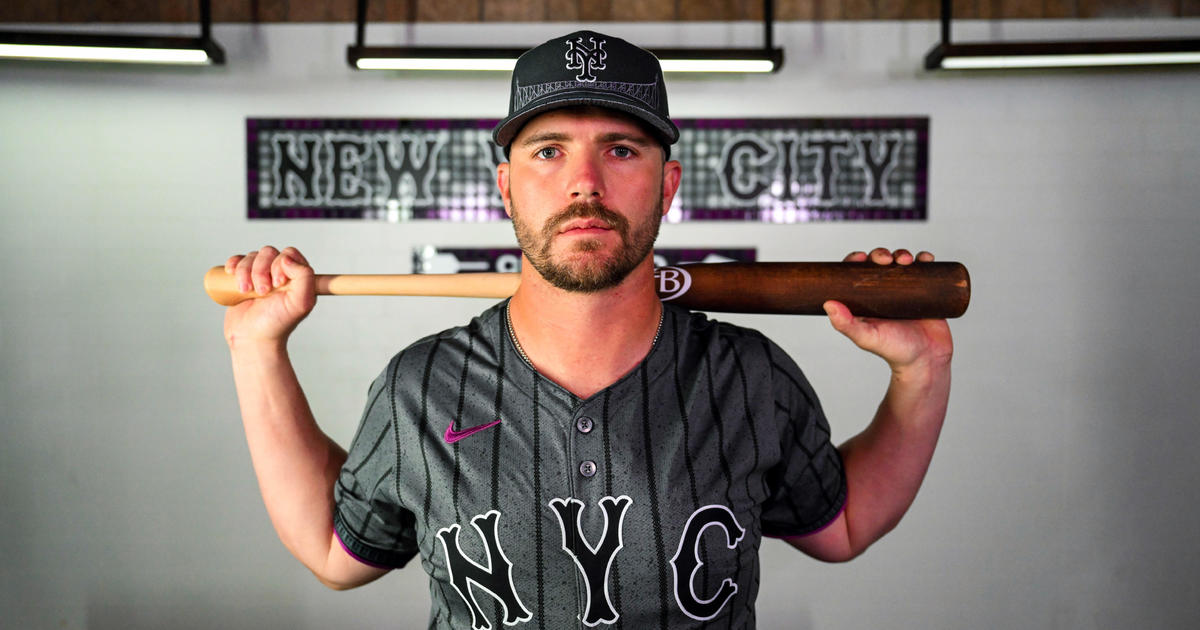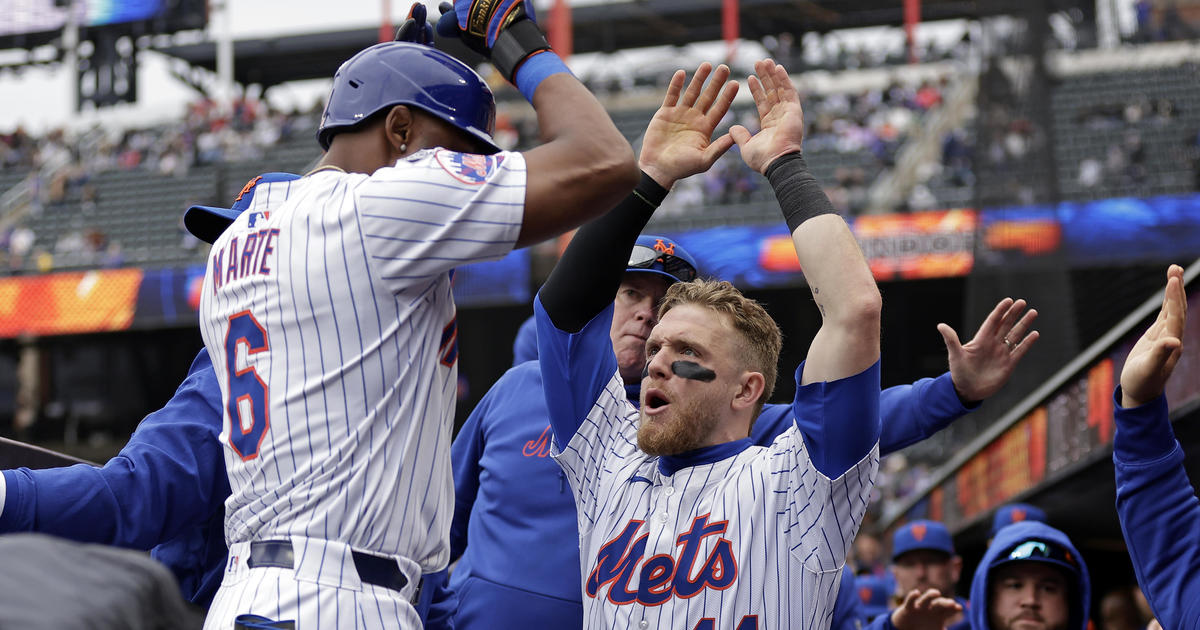Coutinho: The Mets' Rotation, A Work In Progress
By Rich Coutinho
» More Columns
Those of you who have been following me all offseason know my take on the Mets is that they will hit, score runs and improve out of the bullpen. In those areas, I honestly think the Mets measure up with many teams in the National League.
What remains to be seen is how their starting rotation will perform. Therein lies the fate of the Mets' 2012 season.
Before you begin to despair and write off the season (which you absolutely should not do), lets take a look at the quintet of pitchers the Mets are relying on -- and what we should look for in spring training:
1. Johan Santana: When he is right, he is better than any lefty in this division. Yes, including Cliff Lee.
The question is health and we will know more when the Mets fully convene in Port St. Lucie. But make no mistake about it--Santana is determined to pitch and re-claim his place among the elite hurlers in the game. And it would be wise not to count him out.
Sure, I know that what he is recovering from is tough and some players don't make it back. But I am going to do something outrageous here -- I am going go with my gut on this one. I am here to tell you that this guy loves to compete and loves to prove people wrong. How tough is he? He pitched a complete game shutout with a torn meniscus in the last weekend of the 2008 season. Before then, I didn't know much about Johan. I saw everything I needed to see on that cool autumn day at Shea Stadium.
Now, he has been away from the game for over a year and he still has to prove he can be ace material. Being around Johan I can tell you this--his smarts will help him a lot this year. The thing I will be most interested to see in spring training is not so much his velocity (it was around 90 MPH before the injury). I want to see the command of his changeup which in many ways is his bread and butter pitch.
Knowing Johan as I do, his goal will be to pitch on Opening Day. But to do that he will have to not only pitch with no pain but feel good between appearances in Port St. Lucie. An effective Johan Santana could really be a big lift for Terry Collins. His health will be something to watch throughout spring training.
2. Jonathon Niese: The young lefty is still in many ways a question mark but I sincerely like his stuff. That being said, I think Niese has moved away from his best pitch--the overhand curve ball -- which is by all standards, top-notch.
He fell in love with the cutter and I think that contributed to his sub-standard second half of the season. In a division that is overcrowded with lefty hitters like Ryan Howard, Chase Utley and Brian McCann, Niese, much like Santana, could be an important part in disarming that southpaw power.
The other element of concern is durability. Let's face it--all pitchers at this level have ability but in the six-month marathon durability is just as important. And for the second straight year, Niese faded down the stretch. He has to figure out why and correct it. He may have to tweak his regimen between games. With a better bullpen, Terry Collins may need to use a stricter pitch count with Niese.
Whatever it is, the Mets have to find a solution because he is too good a pitcher to limp down the stretch every year.
3. R.A. Dickey: You gotta love R.A. Dickey. Here is a guy who was out of baseball and learned the art of the knuckleball--a lost art it seems. And he never quit. That is an attitude he takes to the field every time he pitches.
After his climb up Mt. Kilimanjaro, I am sure the rigors of a baseball might seem trite to him. But he is such a student of the game and has impeccable preparation skills. He likes watching film of opposing hitters but does not overly rely on it. One of the things Dickey always says is that you need to think about your next pitch -- but over thinking it is as bad as under thinking it.
He played hurt a lot last year and despite the poor win-loss record, he was pretty consistent all year. My sense is you can rely on Dickey to be anywhere from a 3.10 ERA to a 3.40 ERA by season's end. I know much was made about Gio Gonzalez and what the Nationals have in him. Please do me a favor--compare the ERAs of Gio and Dickey and I bet they will be very equal by season's end.
4. Mike Pelfrey: If there is a word I could use to describe Mike Pelfrey it would be "enigma."
Watching his stuff in side sessions and in spring training, I am always impressed. And he has shown flashes as his 2008 and 2010 seasons would indicate. But a lack of consistency has haunted him and held him back from being the pitcher he can be.
Much like Niese, Pelfrey fell in love with the cutter and moved away from his best pitch--the hard sinking fastball. To me, he has to return to his roots. He got to the big leagues throwing that hard sinker, not fooling hitters with a cutter. And by hard I mean 94-plus MPH sinker. I think he needs to trust that pitch much in the way Brandon Webb trusted it in his heyday.
Historically, Pelfrey has one good season, one bad season, one good season. I do not know why that is but it seems to be in his DNA. And so I expect him to rebound in 2012. How good will he be? That all depends on whether he gets back to embracing who he is--a pitcher that pitches low in the strike zone and keeps the ball in the park.
5. Dillon Gee: Sometimes young pitchers can leave you so confused. Dillon Gee falls into that category.
He arrived on the scene last year and impressed everyone with his poise and command. And then something happened. It all started in a game against the A's at CitiField when Gee could not find the plate with a road map. In subsequent starts, it seemed he began to overthrow trying to overpower hitters -- and that is not his game.
He is a control pitcher that needs precise mechanics to perform well. Now, this could all be part of the growing pains of a young pitcher. There were times last year when his control was downright indescribable. Chipper Jones at one point said, "I don't know who that kid is but he lives on the outside of the plate and by lives, I mean he sets up residence there."
Most pitchers who do that know they have to eventually work both sides of the plate. I think Gee overcompensated and got away from what got him wins--throwing precise fastballs and sharp curves that created the illusion of a strike and made the hitter reach for two-strike pitches.
He is a work in progress but absolutely worth the effort because he does know how to set hitters up and get big outs.
Do you think the Mets' rotation will improve in 2012? Sound off below...



